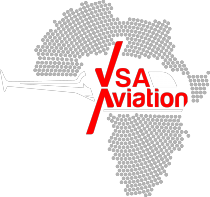Global Fighter Aircraft Market: Growth, Trends & Forecast (2020-2025) - ResearchAndMarkets.com
The "Fighter Aircraft Market - Growth, Trends and Forecast (2020-2025)" report has been added to ResearchAndMarkets.com's offering.
The global fighter aircraft market is estimated to register a CAGR of over 4% during the forecast period (2020-2025).
As the countries are striving to enhance their aerial combat capabilities, several nations are upgrading their existing fighter jets, or are replacing their aging fleet with newer generation aircraft, with advanced features.
Technology advancements in stealth and precision weapons are further supporting the development of the fighter aircraft market, since, every nation want their combat capabilities to be up-to-date.
However, the development and adoption of unmanned aerial vehicles can act as a restraint for fighter jets. Budget constraints can also prevent few smaller countries to opt for next-generation fighter jets, which can hinder the market growth during the forecast period.
Key Market Trends
Conventional Take-off and Landing Projected to Grow at the Highest CAGR
Currently, conventional take-off and landing has the highest share of all the segments. Conventional take-off and landing refer to a method, in which an aircraft accelerates along the ground, until they have enough power for take-off. Most of the fighter aircraft, being currently manufactured, are based on a conventional take-off and landing configuration. Currently, there are various programs, which are going on, in terms of conventional take-off and landing fighter aircraft.
Under the F-35 Joint Strike Fighter (JSF) Program, the US Department of Defense (DOD) is planning to acquire more than 2,400 new generation F-35s. Of the total acquisition, more than 1,700 aircraft shall be F-35A. Moreover, the F-35A is expected to replace the F-16 and the F-15 fighter aircraft. Singapore is also planning to replace the country's aging F-16 fighter jets, with the F-35 Joint Strike Fighter. Thus, upcoming developments are expected to increase the focus on this segment, and this may be the reason for its expected high CAGR.
North America Expected to Witness the Highest Growth Between 2020-2025
In the fighter aircraft market, North America is expected to experience the highest growth. Various developments in the North American region, in terms of fighter aircraft, are expected to lead to its high growth. The US Air Force, since the end of the Second World War, has been regarded as the supreme air force of the world. Currently, the United States has over 2,000 fighter aircraft, and the US Department of Defense is now focused on upgrading its fighter aircraft fleet.
Additionally, the USAF (the United States Air Force) plans to increase its fighter aircraft squadron from 55 to 65 in the coming years, in order to deal with the growing military might of China and Russia. In 2018, Lockheed Martin announced its plan to develop an updated version of its F-22 Raptor fighter aircraft for the USAF. Lockheed Martin plans to combine the top features of the F-35 and the F-22 aircraft into the F-22 Raptor Hybrid aircraft. Thus, various ongoing developments, in terms of fighter aircraft, are expected to lead its growth in North America, in the near future.
Competitive Landscape
Various players, such as Lockheed Martin Corporation, The Boeing Company, Airbus SE, Dassault Aviation, and Hindustan Aeronautics Limited, hold the significant market share, as of December 2019. Various initiatives, as well as product innovations, which are being done by companies, have led them to strengthen their presence in the market. The Boeing Company, Airbus Defence and Space, Lockheed Martin, and Dassault Aviation, hold the major market share.
In 2019, Dassault Aviation reported the first delivery of the Rafale fighter aircraft, for Qatar. The first Rafale delivery happened on schedule after a contract was signed between Qatar and Dassault Aviation for 24 Rafale fighter aircraft, in order to equip for the Qatari Air Force.
Key Topics Covered
1 INTRODUCTION
1.1 Study Assumptions
1.2 Scope of the Study
2 RESEARCH METHODOLOGY
3 EXECUTIVE SUMMARY
4 MARKET DYNAMICS
4.1 Market Overview
4.2 Market Drivers
4.3 Market Restraints
4.4 Porter's Five Forces Analysis
5 MARKET SEGMENTATION
5.1 Take-off and Landing
5.1.1 Conventional Take-off and Landing
5.1.2 Short Take-off and Landing
5.1.3 Vertical Take-off and Landing
5.2 Geography
5.2.1 North America
5.2.2 Latin America
5.2.3 Asia-Pacific
5.2.4 Europe
5.2.5 Middle-East & Africa
6 COMPETITIVE LANDSCAPE
6.1 Vendor Market Share
6.2 Company Profiles
6.2.1 Lockheed Martin Corporation
6.2.2 Saab AB
6.2.3 The Boeing Company
6.2.4 Airbus SE
6.2.5 United Aircraft Corporation
6.2.6 Chengdu Aircraft Industrial (Group) Co. Ltd.
6.2.7 Hindustan Aeronautics Limited
6.2.8 BAE Systems plc
6.2.9 Dassault Aviation SA
7 MARKET OPPORTUNITIES AND FUTURE TRENDS
For more information about this report visit https://www.researchandmarkets.com/r/jbdk6
View source version on businesswire.com: https://www.businesswire.com/news/home/20200827005373/en/



